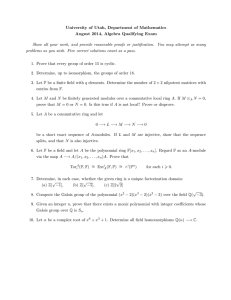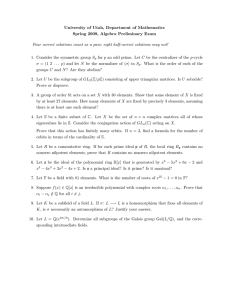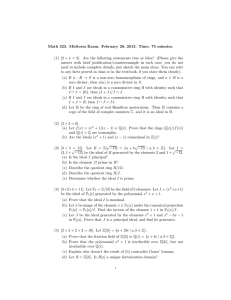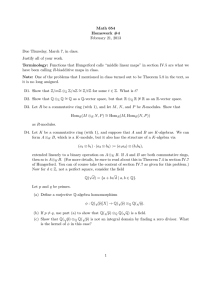Algebra Autumn 2013 Frank Sottile 24 October 2013 Eighth Homework
advertisement
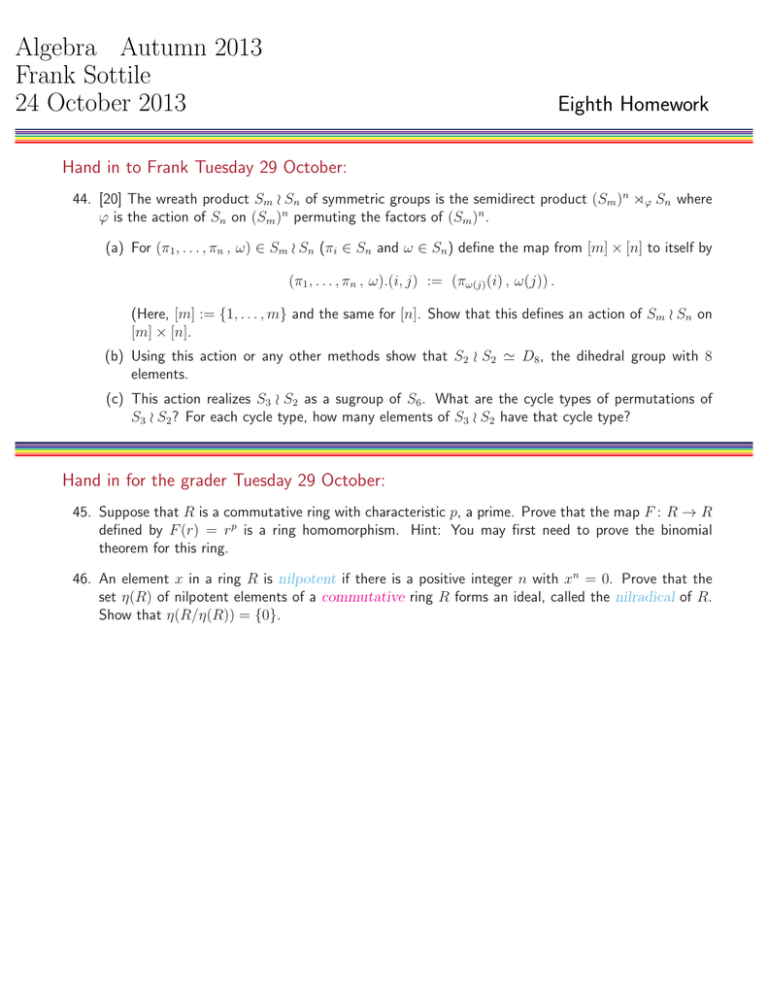
Algebra Autumn 2013
Frank Sottile
24 October 2013
Eighth Homework
Hand in to Frank Tuesday 29 October:
44. [20] The wreath product Sm ≀ Sn of symmetric groups is the semidirect product (Sm )n ⋊ϕ Sn where
ϕ is the action of Sn on (Sm )n permuting the factors of (Sm )n .
(a) For (π1 , . . . , πn , ω) ∈ Sm ≀ Sn (πi ∈ Sn and ω ∈ Sn ) define the map from [m] × [n] to itself by
(π1 , . . . , πn , ω).(i, j) := (πω(j) (i) , ω(j)) .
(Here, [m] := {1, . . . , m} and the same for [n]. Show that this defines an action of Sm ≀ Sn on
[m] × [n].
(b) Using this action or any other methods show that S2 ≀ S2 ≃ D8 , the dihedral group with 8
elements.
(c) This action realizes S3 ≀ S2 as a sugroup of S6 . What are the cycle types of permutations of
S3 ≀ S2 ? For each cycle type, how many elements of S3 ≀ S2 have that cycle type?
Hand in for the grader Tuesday 29 October:
45. Suppose that R is a commutative ring with characteristic p, a prime. Prove that the map F : R → R
defined by F (r) = rp is a ring homomorphism. Hint: You may first need to prove the binomial
theorem for this ring.
46. An element x in a ring R is nilpotent if there is a positive integer n with xn = 0. Prove that the
set η(R) of nilpotent elements of a commutative ring R forms an ideal, called the nilradical of R.
Show that η(R/η(R)) = {0}.


